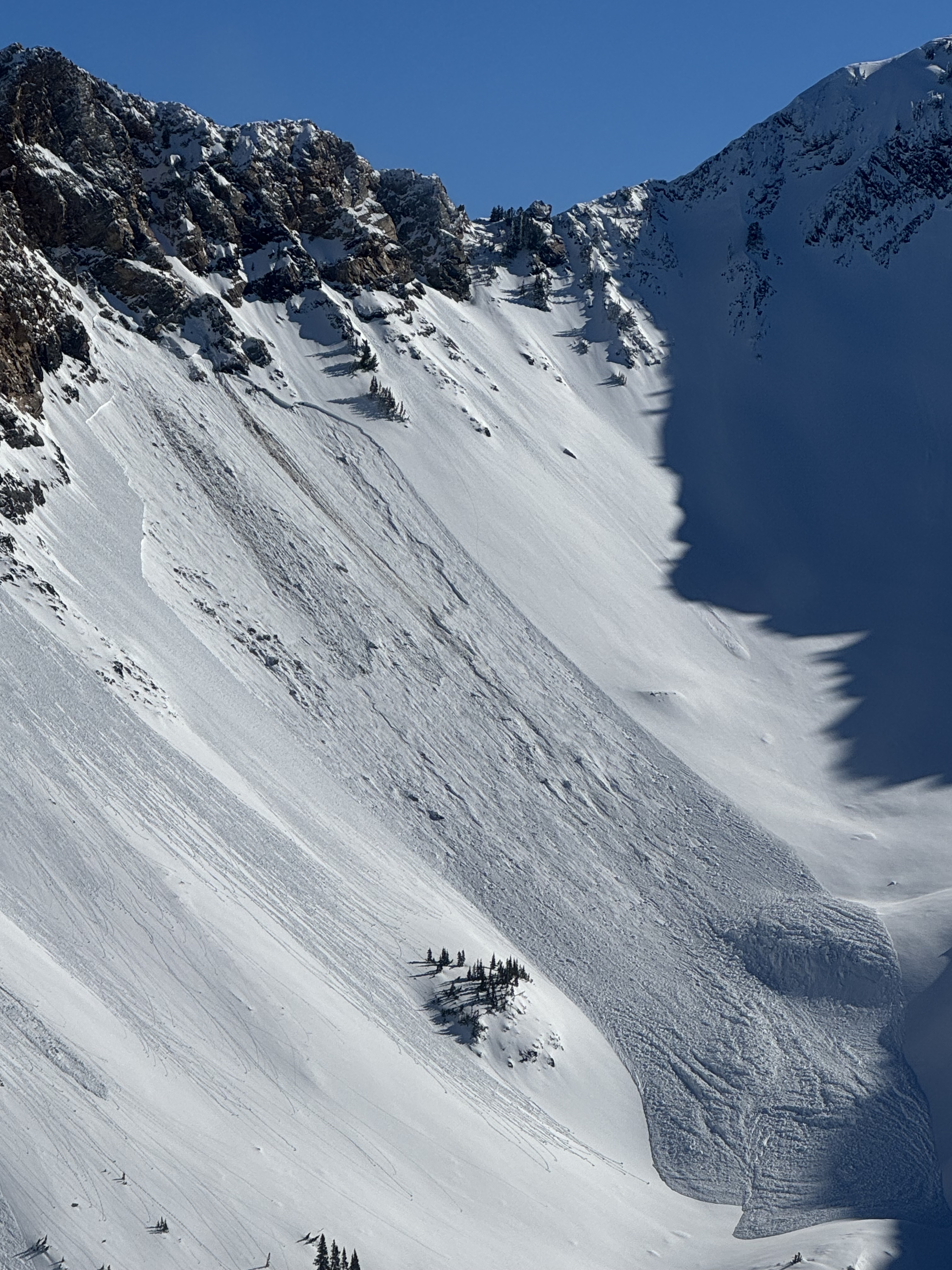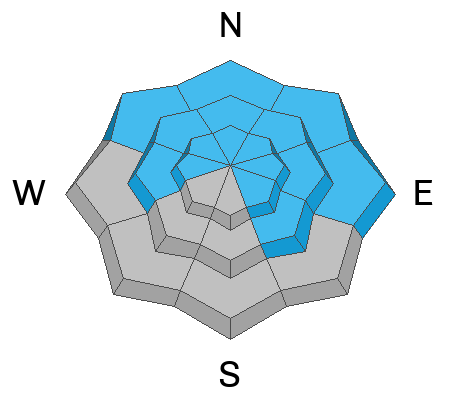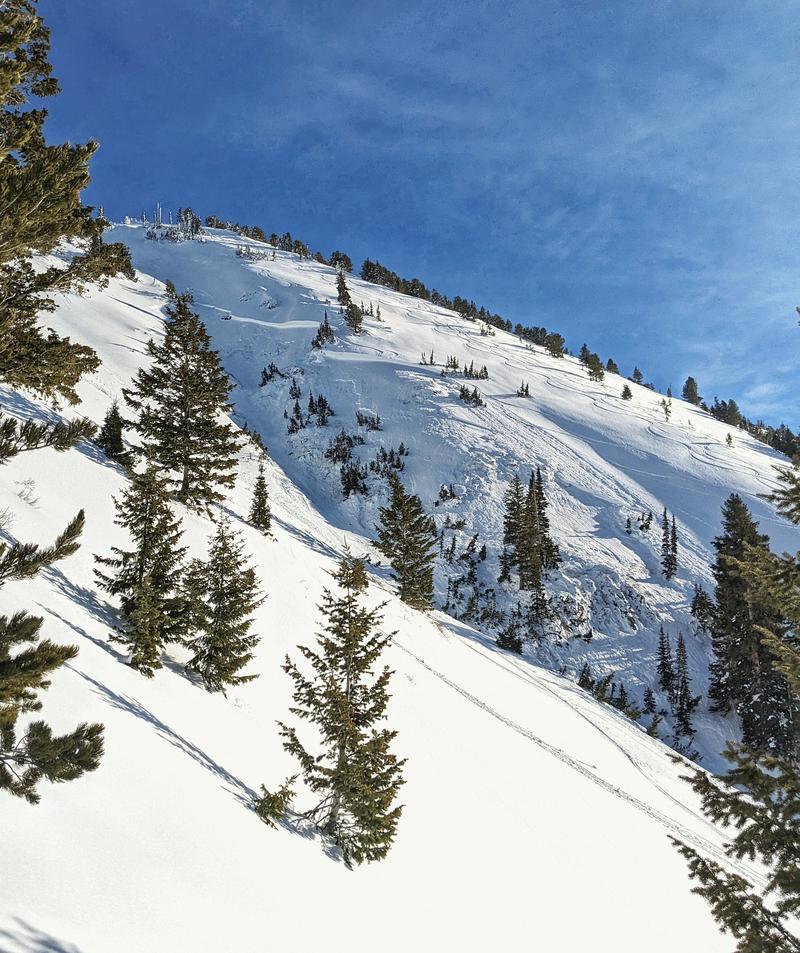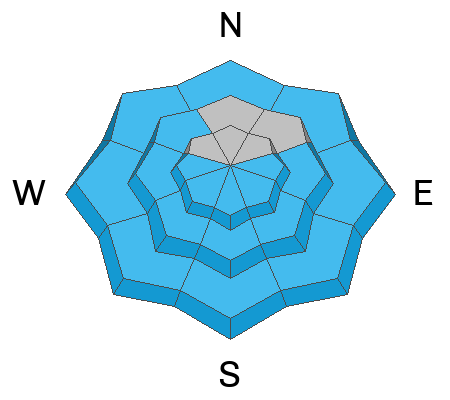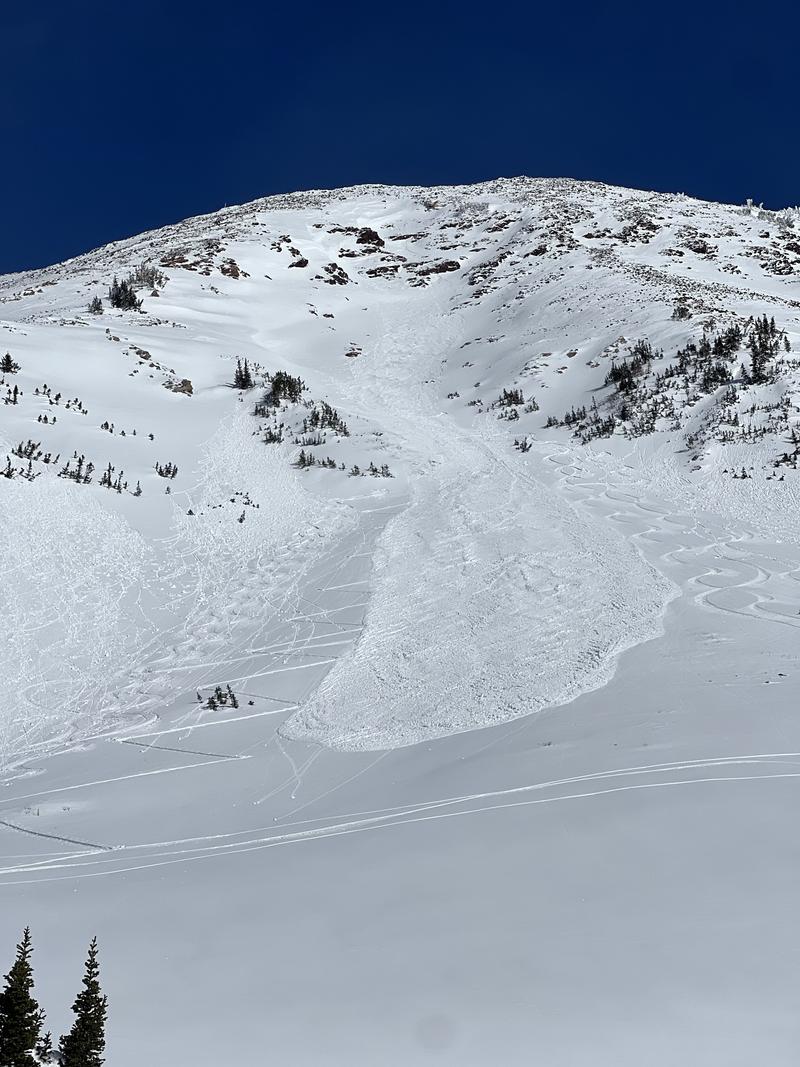Join us for a Motorized Backcountry 101: Introduction to Avalanches class on February 2-3 down on the Skyline. Click
HERE for more information.
Skies are clear.
Mountain temperatures remain inverted, with ridgetop temps in the low to mid-30s while basins and trailheads are in the low 20s. Winds are from the south and are hardly a whisper.
For today, we'll have mostly clear skies, light winds from the south and temps rising again to near 40°F up high and near 50°F down low. That's not a misprnt.
Riding conditions remain excellent in the sun and wind sheltered terrain. Solar aspects and low elevation northerlies have a crust that will soften with daytime warming. Developing surface hoar may be noted in sheltered terrain.
The Outlook: Rosy. From my vantage, the pattern looks fairly active again, with a storm Thursday afternoon through Saturday and another one lined up for early next week; each possibly with a tropical moisture tap. The southern mountains should receive preferential treatment, but we won't get left standing at the altar.
A few parties noted a large natural hard slab avalanche in west facing upper Mineral Fork (of BCC) at 10,400' yesterday. It's possible that the avalanche was triggered by a wet sluff or rockfall from above; nevertheless, it's a monster that avalanched down to the early season facets near the ground. Dimensions are a guess of 4-6' deep and 300' wide? (photo Powderbird)
With skyrocketing temps yesterday, many wet loose and a few wet slab avalanches barreled down steep solar terrain as they became wet and unstable.
Click
here for all recent observations and avalanches.





